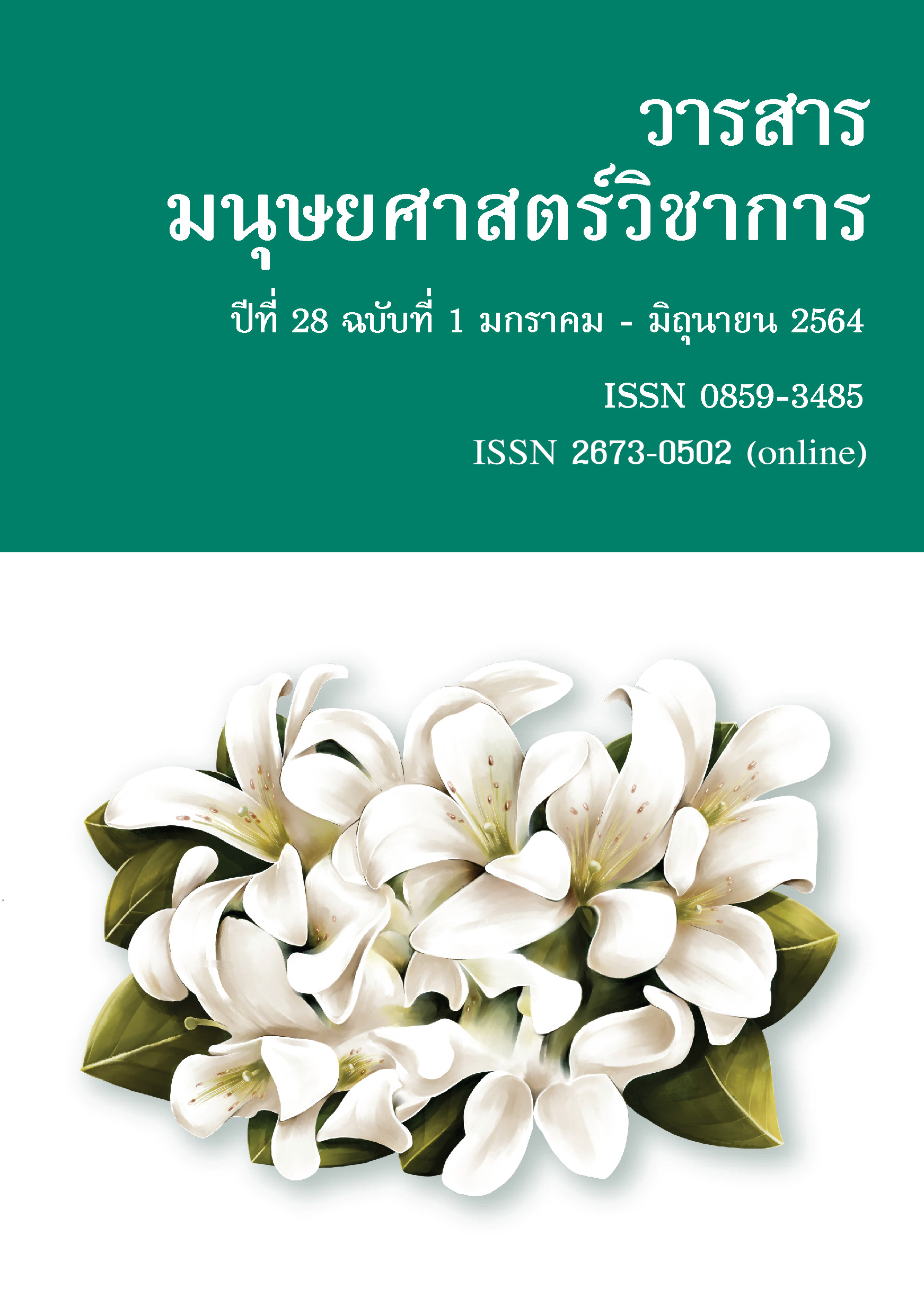A Mobile Learning Instructional Model Using the Brain-based Learning and Phonics Methods to Enhance English Pronunciation
Main Article Content
Abstract
The purposes of this research were to 1) study the mobile learning instructional model using the brain-based learning and phonics methods, and 2) verify the mobile learning instructional model using the brain-based learning and phonics methods. The sample was nine experts assembled using purposive selection. Their qualifications were at least three years’ experience in designing mobile learning programs and brain-based learning programs and in teaching the phonics method or English pronunciation. The collected data were analyzed using mean, percentage, and standard deviation.
The research revealed the following findings: 1) the mobile learning instructional model using the brain-based learning and phonics methods consisted of six elements and three processes. The six elements were mobile technology, learners, facilitator, brain-based learning, phonics method and English pronunciation assessment and the three processes were pre-instruction, instruction, and post-instruction, and 2) the mobile learning i nstructional model using the brain-based learning and phonics methods (BBLP Model) was certified by the experts, who rated the learning instructional model highly suitable (x̅ = 4.80, S.D. = 0.43).
Article Details
References
เกศสุดา ใจคำ. (2552). การเรียนรู้โดยใช้สมองเป็นฐาน: Brain Based Learning. FEU Academic Review. 3(1): 62-70.
จีรพรรณ พรมประเสริฐ. (2557). การวิเคราะห์ปัญหาและสาเหตุที่ทำให้เกิดการออกเสียงภาษาอังกฤษที่ผิดพลาดของนักศึกษาสาขาวิชาภาษาอังกฤษ (รายงานการวิจัย). เพชรบูรณ์: สาขาวิชาภาษาอังกฤษธุรกิจบริการ คณะมนุษยศาสตร์และสังคมศาสตร์ มหาวิทยาลัยราชภัฏเพชรบูรณ์.
ถิรวัฒน์ ตันทนิส. (2555). การศึกษาปัญหาการออกเสียงภาษาอังกฤษและกลวิธีการเรียนการออกเสียงภาษาอังกฤษของนักศึกษาสหวิทยาการ ชั้นปีที่ 3 มหาวิทยาลัยธรรมศาสตร์. วารสารภาษาและภาษาศาสตร์. 31(1). 87-110.
นิพนธ์ บริเวธานันท์. 2561. การพัฒนารูปแบบเว็บแอปพลิเคชันด้วยการเรียนรู้แบบร่วมมือผ่านห้องเรียนไร้กรอบเพื่อส่งเสริมการรู้เทคโนโลยีสารสนเทศและการสื่อสารสำหรับผู้เรียนระดับอุดมศึกษา (วิทยานิพนธ์ปรัชญาดุษฎีบัณฑิต). กรุงเทพฯ: มหาวิทยาลัยเกษตรศาสตร์.
บัญญพนต์ พูนสวัสดิ์. (2558). Digital Education การศึกษาบนโลกดิจิทัล กับผู้เรียนในศตวรรษที่ 21. สืบค้นเมื่อ 2 ตุลาคม 2560, จาก https://www.digitalagemag.com/digital-education.
ปรัชญนันท์ นิลสุข. (2551). เอ็มเลินนิ่ง (m-Learning) การเรียนการสอนผ่านโทรศัพท์เคลื่อนที่. พัฒนาเทคนิคศึกษา. 20(66). 25-30.
วิทยากร เชียงกูล. (2549). การเรียนรู้อย่างมีประสิทธิภาพ. กรุงเทพฯ: สายธาร.
ศศิธร เวียงวะลัย. (2556). การจัดการเรียนรู้ (Learning Management). กรุงเทพฯ: โอเดียนสโตร์.
ศิตา เยี่ยมขันติถาวร. (2556). ความรู้เบื้องต้นที่ครูสอนภาษาอังกฤษควรรู้เกี่ยวกับการออกเสียง. พิมพ์ครั้งที่ 2. กรุงเทพฯ: สำนักพิมพ์แห่งจุฬาลงกรณ์มหาวิทยาลัย.
สาเกต ทองเที่ยง. (2557) การใช้วิธีสอนโฟนิกส์ร่วมกับหนังสือเล่มใหญ่ เพื่อส่งเสริมการออกเสียงและความสามารถในการอ่านภาษาอังกฤษของนักเรียนโรงเรียนนานาชาติ (วิทยานิพนธ์ศึกษาศาสตรมหาบัณฑิต). เชียงใหม่: มหาวิทยาลัยเชียงใหม่.
สำนักบริหารและพัฒนาองค์ความรู้. (2558). สมองสร้างสรรค์ด้วย Brain-based Learning. โอ เค เอ็ม ดี. 1(5): 4-7.
อาภรณ์ ใจเที่ยง. (2553). หลักการสอน (ฉบับปรับปรุง) (พิมพ์ครั้งที่ 5). กรุงเทพฯ: โอเดียนสโตร์.
อารีย์ ปรีดีกุล (2553) การพัฒนารูปแบบการเรียนการสอนทักษะการฟัง-พูดภาษาอังกฤษตามหลักการสอนภาษาเพื่อการสื่อสารและการเรียนรู้โดยใช้สมองเป็นฐานเพื่อเสริมสร้างความสามารถในการใช้ภาษาเพื่อการสื่อสารของนักศึกษามหาวิทยาลัยราชภัฏ (วิทยานิพนธ์การศึกษาดุษฎีบัณฑิต). พิษณุโลก: มหาวิทยาลัยนเรศวร.
Adjei, E. (2016). The effect of Using the Phonics Method of teaching Reading and Comprehension on Junior High School Students: A Case Study of Axim Road M.A. Zion Junior High School. Department of Basic Education, Faculty of Education, Community University College.
Boss, S. (2011). Six Tips for Brain Based Learning. Retrieved 19 November 2016, from https://www.edutopia.org/brain-based-learning-strategiesresource-guide.
Caine, R. and G. Caine. (2013). Teaching for How People Learn Naturally. The Handbook of Educational Theories. In: Beverly, J., et al. (eds.) North Carolina: Information Age Publishing.
Chuang, Y. T. (2015). SSCLS: A Smartphone-Supported Collaborative Learning System. Telematics and Informatics, 32, 463-474.
Chunsuvimol, B. and Ronakiat, N. (2000). Stylistic variation of [f] and [v] in the English of Thai students. Thammasat Review, 6(1), 177-195.
Gikas, J. and Grant, M. M. (2013). Mobile computing devices in higher education: Student perspectives on learning with cellphones, smartphones & social media. Internet and Higher Education, 19 (2013), 18-26.
Lina, Y. T. and Joua, M. (2012). A Web Application Supported Learning Environment for Enhancing Classroom Teaching a nd Learning Experiences. Social and Behavioral Sciences, 64 (2012), 1-11.
Muhammed, A. A. (2014). The Impact of Mobiles on Language Learning on the part of English Foreign Language (EFL) University Students. Social and Behavioral Sciences, 136 (2014), 104-108.
Nordin, N. et al. (2010). Mobile Learning Framework for Lifelong Learning. Procedia Social and Behavioral Sciences, 7 (c), 130-138.
Starrett, E. V. (2007). Teaching phonics for balanced reading. 2nd edition. United States of America: Corwin Press.
Thongsin, N. (2007). A study of English pronunciation problems for Thai learners (Master’s thesis). Phitsanulok: Naresuan University.
Yagcioglu, O. (2014). The advantages of brain-based learning in ELT classes. Social and Behavioral Sciences, 152 (2014), 258-262.
Wei, Y. and Zhou Y. (2002). Insights into English Pronunciation Problems of Thai Students. Retrieved 20 October 2017, from https://eric.ed.gov/?id=ED476746.


